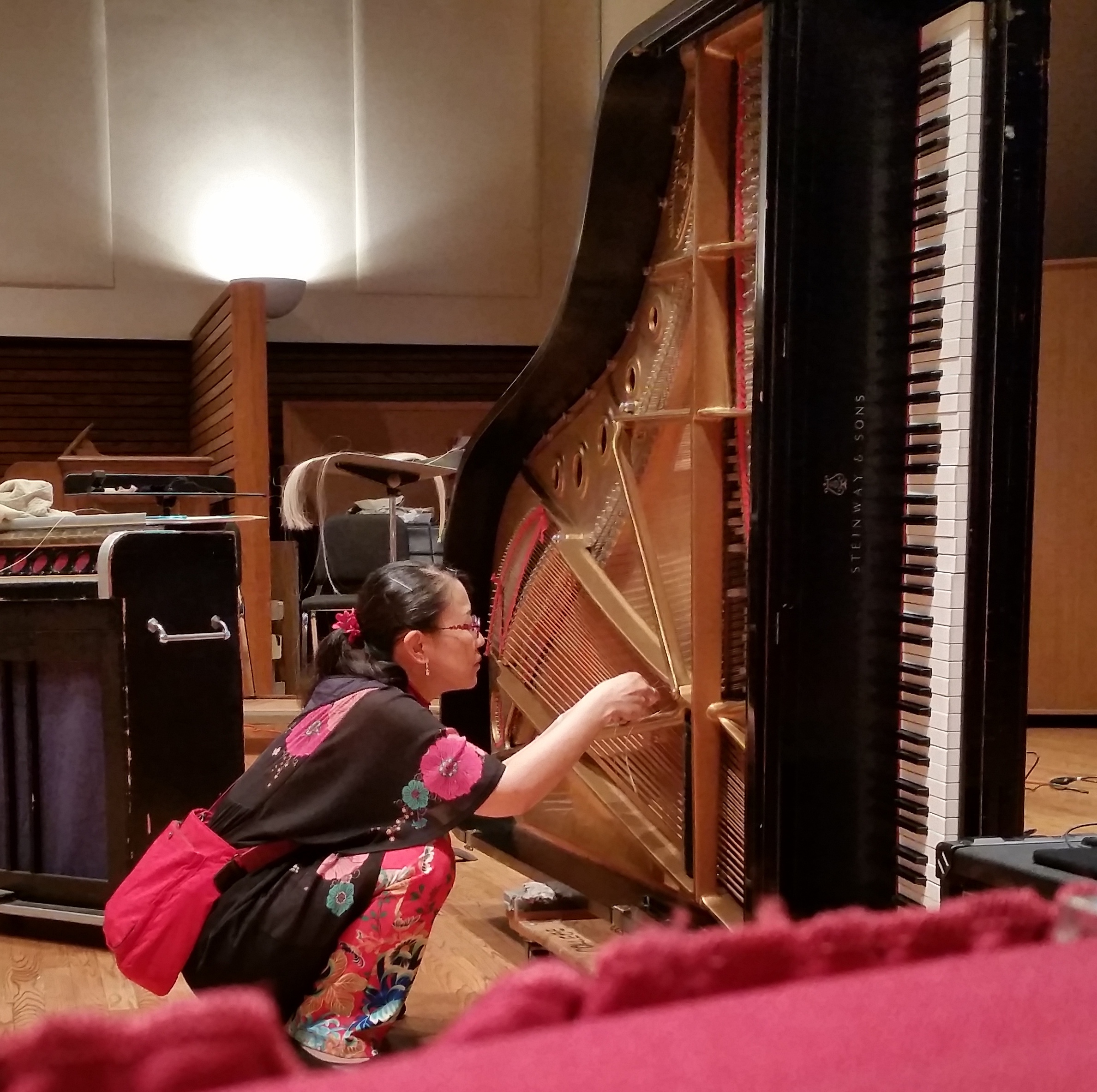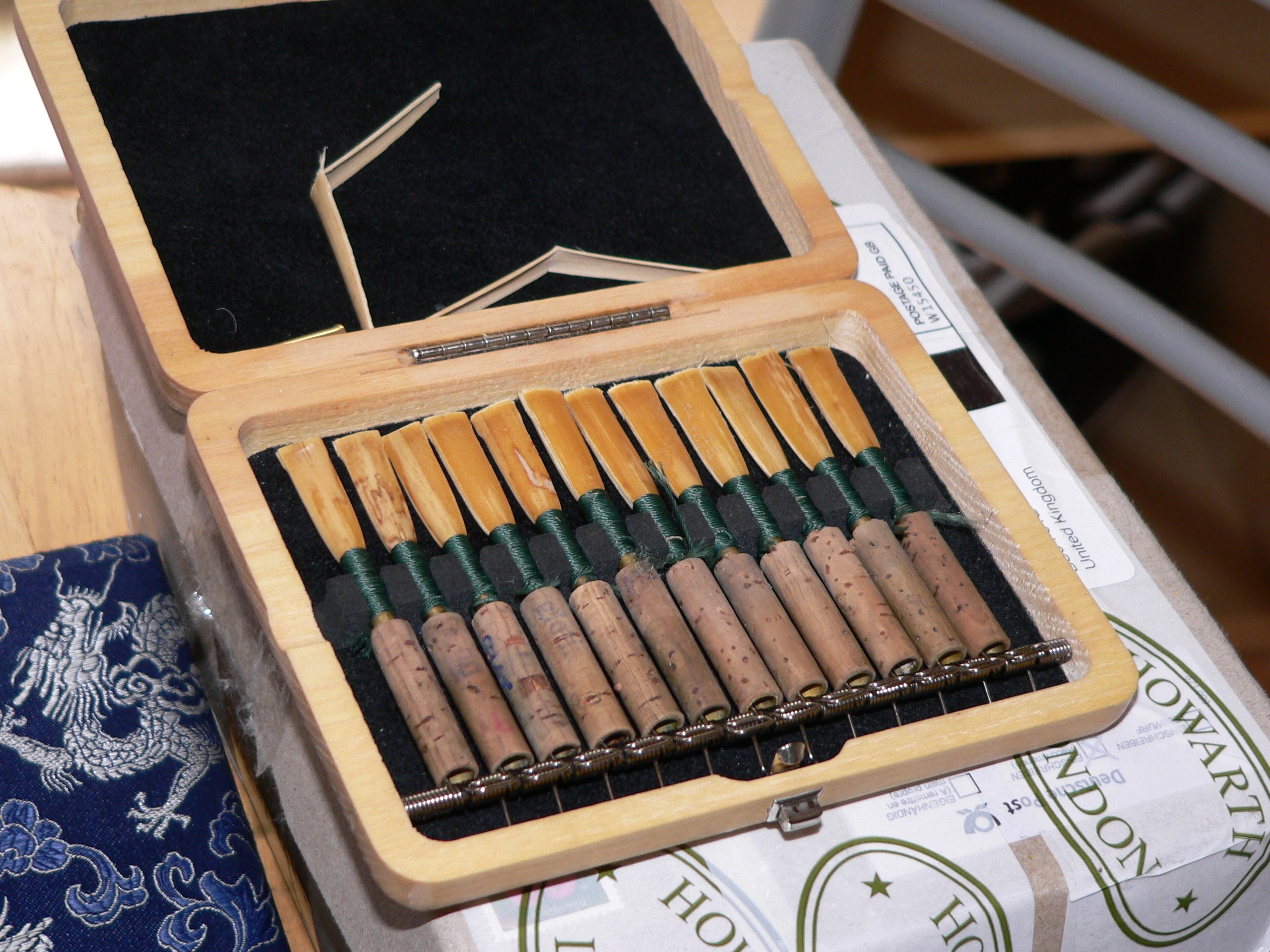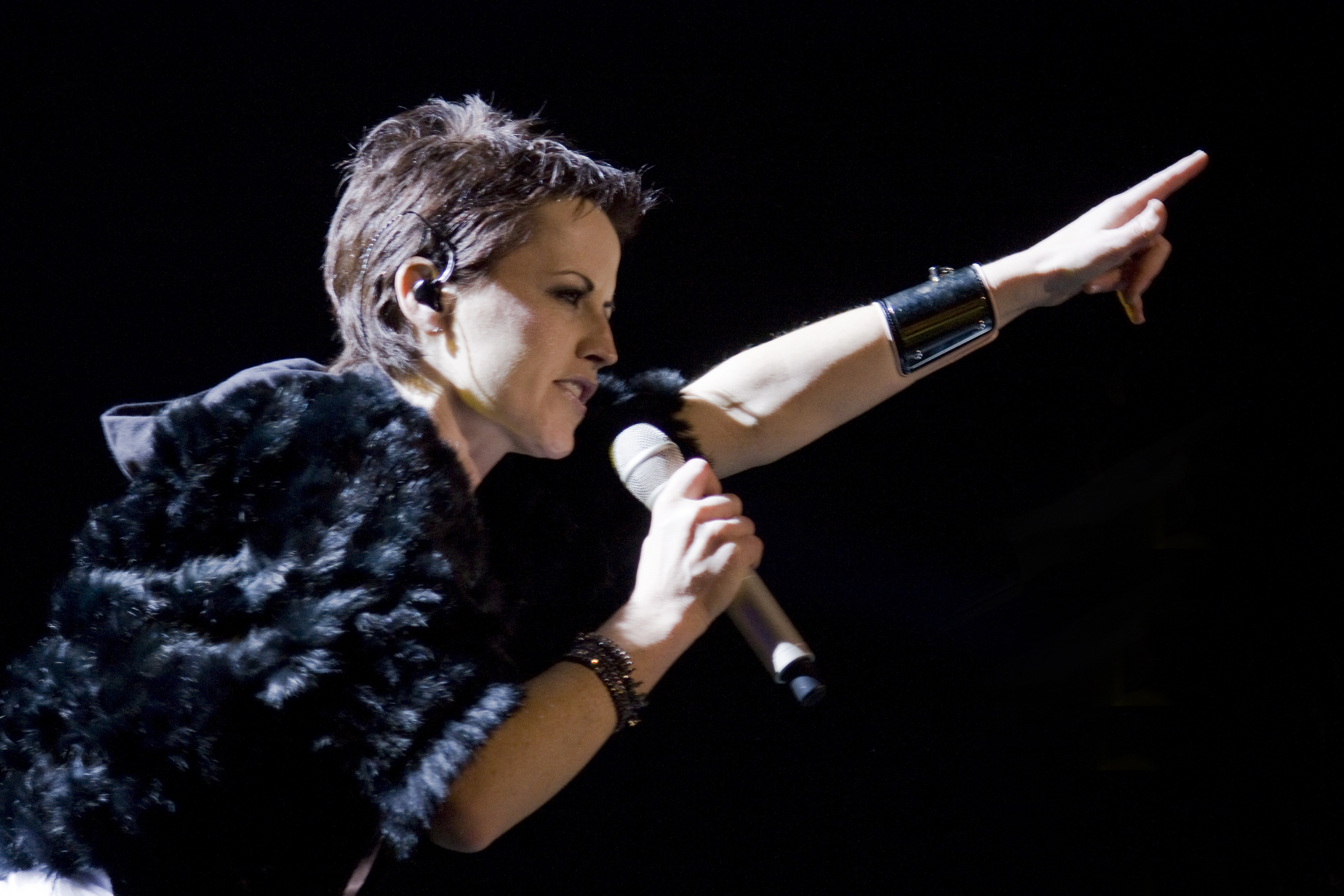Extended Techniques

Composers will sometimes call upon performers to use their instruments in untraditional ways as a means of creating different timbres or sound effects. These are called extended techniques, and vary from instrument to instrument.
Alternative Techniques
In general, extended techniques are those for which no standardized notation exists, and which thus require special explanation for the performer. Non-standard modes of playing instruments which have accepted notational customs can be considered alternative techniques and can include:
- mutes and other bell modifications, specifically for brass instruments;
- stopped horn, which requires placing the hand inside the bell of the horn, muting the sound and lowering the pitch by a half-step;
- pizzicato, the process of plucking the string on a traditionally bowed instrument like violin or cello;
- capo, a clamp which is placed on the neck of a guitar or similar instrument which uniformly reduces the vibrating lengths of the strings, effectively transposing the instrument;
- percussion techniques such as rim shot (striking the metal ring around the snare drum head), playing the raised center — the bell — of a suspended cymbal, or the use of wire brushes instead of traditional drum sticks; and
- wind instrument performance techniques such as double- and triple-tonguing and circular breathing, which do not require indications on the score.
Extended Techniques
Various extended techniques are presented here by instrument family. This list is not cohesive, and in fact composers will often devise or discover new ways of using instruments in non-standard ways.
In most cases, extended techniques do not have established methods of notation. Whether the composer relies on descriptive text or devises new notational techniques, extended techniques should always be carefully explained in a note at the beginning of the score and individual instrumental part.
Woodwinds
Key Slap
Most modern woodwinds feature a system of keys which control leather pads to cover air holes. Slapping the keys down without engaging the embouchure or even without blowing air through the instrument can create a percussive sound that quietly resonates at the pitch corresponding to the fingering being employed. This is especially noticeable on instruments with larger resonating chambers, like tenor and baritone saxophone and bassoon.
Fluttertongue
Trilling or rolling the tongue, as in the Spanish letter rr, can produce an intense, energetic tone in a woodwind instrument. While possible to do on a single- or double-reed instrument, this technique is most commonly used with the flute and piccolo.
Growl
This technique, most common on saxophone and clarinet, involves combining the traditional sound of the instrument with a slight engagement of the vocal cords.
Reed Squeak
The standard double reed instruments — oboe, English horn and bassoon — have reed assemblies which are easily removed from the instrument. When played alone, these reeds can create a shrill, gutteral squeal which can be used as a special effect. Single reed instruments — clarinets and saxophones — can create a similar effect by removing their mouthpiece assembly from the body of the instrument and playing it separately.

Brass
Fluttertongue
Mouthpiece Buzzing
Brass instrument mouthpieces are easily removed from the instrument, and when played separately create a buzzing tone whose pitch can be controlled directly by the tightness of the embouchure.
Percussion
While percussion instruments have recognized standard playing techniques, innovation is very common; as such, the delineation between standard, alternative and extended playing techniques is often fuzzy. Found objects, like brake drums and spoons are commonplace in the percussion section, and techniques such as water gong (striking a gong as it is being lowered into or raised from a basin of water) or bowed vibraphone (playing the edge of vibraphone bars with the bow from a double bass) are used to create diverse soundscapes.
Strings
Col Legno
Col legno is an Italian term meaning "with wood" and refers to using the wooden portion of a bow, rather than the hair, on the strings. The usual technique is to bounce the wood off the strings, creating a light pizzicato-like sound, but occasionally composers will indicate col legno tratto, which means to drag the wood across the string as one would the the hair in normal bowing technique.
Bowing Location
On bowed instruments, the standard location for bowing is the portion of the strings between the bridge and the fingerboard. Composers may direct the player to play between the bridge and the tailpiece instead, which will produce a much higher pitched sound unaffected by fingerings; or on the fingerboard, which will produce a thinner sound unaffected by the resonating body of the instrument.
Playing within the normal area but very close to the bridge is called sul ponticello, and creates a glassy, fuzzy sound. Playing very close to the fingerboard, alternatively, is called sul tasto, and results in a softer sound.
Scordatura
The strings on string instruments, both bowed and plucked, have standard tuning settings — for example, the four strings of the viola are tuned to C3, G3, D4 and A4. In some situations, however, strings can be retuned, either as a whole — effectively transposing the instrument — or individually, requiring the use of altered fingerings.
Harmonics
If, instead of pressing a finger down firmly, a bowed instrument player touches the string lightly while bowing, they can create a higher, thinner and software pitch than what is normally played. This technique, called playing a natural harmonic, produces a slightly different, more ethereal timbre. If the player also presses a finger firmly on the string closer to the scroll, the resulting sound is called an artificial harmonic.
Percussive Techniques
The body of stringed instruments, both bowed and plucked, are designed to help resonate the sound of the strings. As a result, striking the resonating chamber produces a fuller sound that can be heard through the tone holes in the instrument body.
The Piano
Sympathetic Vibration
The rightmost pedal on the piano is the damper pedal which, when depressed, releases the dampers from the all the strings in the instrument, allowing them to vibrate freely. This pedal is used in normal performance to allow notes to resonate under the player's control, but can be used for some special effects — namely, allowing strings to vibrate sympathetically from the sound of other notes. For example, if the damper pedal is held down and the C2 key is played, the strings for C3, G3, C4, F4 and so on will vibrate as well, being other pitches in the harmonic series of the original tone.
Most grand pianos are fitted with a sostenuto pedal as the center pedal; this pedal also disengages dampers, but only for the keys which are being held down when the pedal is engaged. This allows a player to allow certain strings to vibrate sympathetically during a passage while the other strings are kept mute by the piano's dampers.
Direct String Manipulation
Composers may direct the performer to play the strings directly, rather than using the keyboard. On a grand piano with the music stand removed, a pianist may stand and reach the strings to pluck them or strike them with a mallet or other stick. Pianists will often place markers near the strings they are to play to find them easily during a performance.
Because the strings of a piano are actually very tightly wound coils, an interesting effect can be created by moving a finger up and down the length of the string. American composer Henry Cowell famously used this technique in his 1925 composition The Banshee which directs the player to stand beside the instrument to perform, using several techniques to directly manipulate the string while an assistant sits on the bench to hold down the damper pedal.
Prepared Piano
The timbre of individual notes can be affected by placing objects on or between the strings of the piano, a technique called prepared piano. Works for prepared piano will often include a diagram for what to place in the piano, specifying elements like type and shape of materials, which strings to place them upon and how far from the pegboard they should be inserted.
This technique, pioneered by American composer John Cage, allows the piano to become a miniature percussion ensemble. Different preparations can alter not only the timbre or envelope of the sound, but will sometimes alter or obscure the pitch of specific notes.
Alternate Tunings
Retuning a piano is time-consuming, but can yield worthwhile effects. Pianos can be tuned to historical temperaments, which can be useful for creating period performances. Piano music with quarter tones can be performed using two pianos, one tuned traditionally and another tuned one quarter-tone flat.
Honky-tonk pianos are pianos, usually upright or spinet models, which have had one or more string played by a particular key slightly detuned, creating acoustical beating when played to produce a shimmering effect. This effect can sometimes be emulated with a tack piano, a piano which has had metal tacks stuck into the hammers where they strike the keys.
Voice
Throat Singing
Singers can create harmonic overtones while singing by changing the shape of the throat and mouth, allowing two pitches to be heard simultaneously. This technique is common in native cultures in Tuva, Mongolia and Arctic Canada.
Yodeling
Yodeling involves the rapid juxtaposition of notes in different ranges, and is often employed in particular popular vocal styles.

Screaming
Many metal musical styles incorporate screaming and growling as controlled vocal techniques, which will sometimes feature singing while inhaling air. Because of the potential for laryngeal damage, many singers employing these techniques adopt careful protective techniques while singing.
Sprechstimme and Sprechgesang
Composers will sometimes direct singers to blur the boundary between singing and speaking. Sprechgesang uses specific pitches, but involves unmetered, speech-like rhythms. Sprechstimme uses specific rhythms but involves indeterminate pitches, specifying only general relative ranges for specific notes. Sprechstimme was notably used in German composer Arnold Schoenberg's 1912 song cycle Pierrot Lunaire, where the technique was indicated by Xs on the note stems in the vocal part.
A similar method is sometimes employed in popular music styles.
Beatboxing
Also called vocal percussion, beatboxing is the technique of using parts of the mouth to create percussive effects, which are generally amplified using a microphone. The technique relies primarily on the teeth, lips, throat and tongue, although the vocal cords and external manipulations of the face with the hands (like flicking the cheek with one's fingers) are sometimes used. Beatboxing is part of hip hop culture, and is a standard element in modern acapella music.
Extended Techniques: Summary
- Extended techniques are methods of using instruments in non-traditional ways.
- Extended techniques can be classified as techniques for which there is not an recognized standard notation.
- Techniques which are not considered the standard performing mode for the instrument, and for which there is a accepted standard notation, can be considered alternative techniques.
- Alternative techniques can include the use of mutes, capos, or wire brushes, and techniques like pizzicato, circular breathing, or stopped horn.
- Woodwind extended techniques can include:
- key slap, striking the keys without engaging the embouchure
- fluttertongue, rolling or flapping the tongue while playing
- growl, engaging the vocal cords slightly while playing
- reed squeak, playing the reed or mouthpiece separately from the body of the instrument
- Brass extended techniques can include:
- fluttertongue, rolling or flapping the tongue while playing
- mouthpiece buzzing, playing the mouthpiece separately from the body of the instrument
- Because instrumentation is so varied and innovations are common, it is difficult to make a useful differentiation between standard, alternative and extended techniques for percussion.
- String extended techniques can include
- col legno, playing with the wood of the bow
- sul tasto, playing close to the fingerboard
- sul ponticello, playing close to the bridge
- scordatura, tuning the strings to a non-standard tuning
- harmonics, lightly touching the string while playing to create a higher, thinner pitch
- instrument body percussion, tapping or slapping the resonant body of the instrument
- Piano extended techniques can include:
- sympathetic vibration, allowing unplayed strings to vibrate as the result of played notes
- direct string manipulation, plucking or scratching the strings directly
- prepared piano, placing objects in and on the strings to alter the timbre
- alternative tunings, using historical or microtonal tunings
- Vocal extended techniques can include:
- throat singing, using the throat and mouth to create secondary pitches while singing
- yodeling, switching quickly between registers
- screaming, singing a harsh, stressed vocal timbre
- growling, singing in an unnaturally low range
- sprechstimme, singing with indeterminate pitch
- sprechgesang, singing with indeterminate, speech-like rhythms
- beatboxing, using the lips, teeth, tongue and sometimes hands to create percussive sounds without engaging the vocal cords